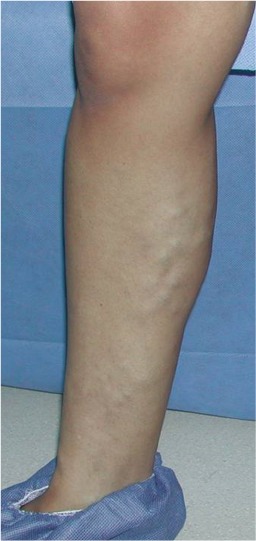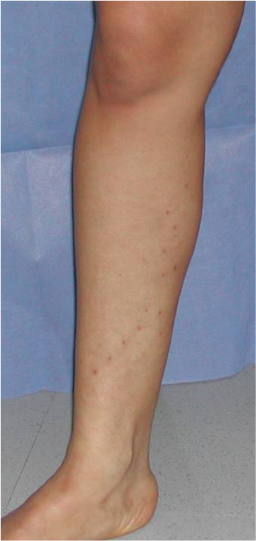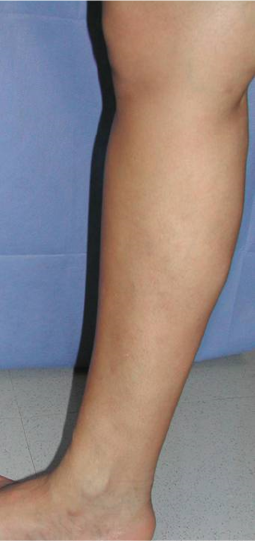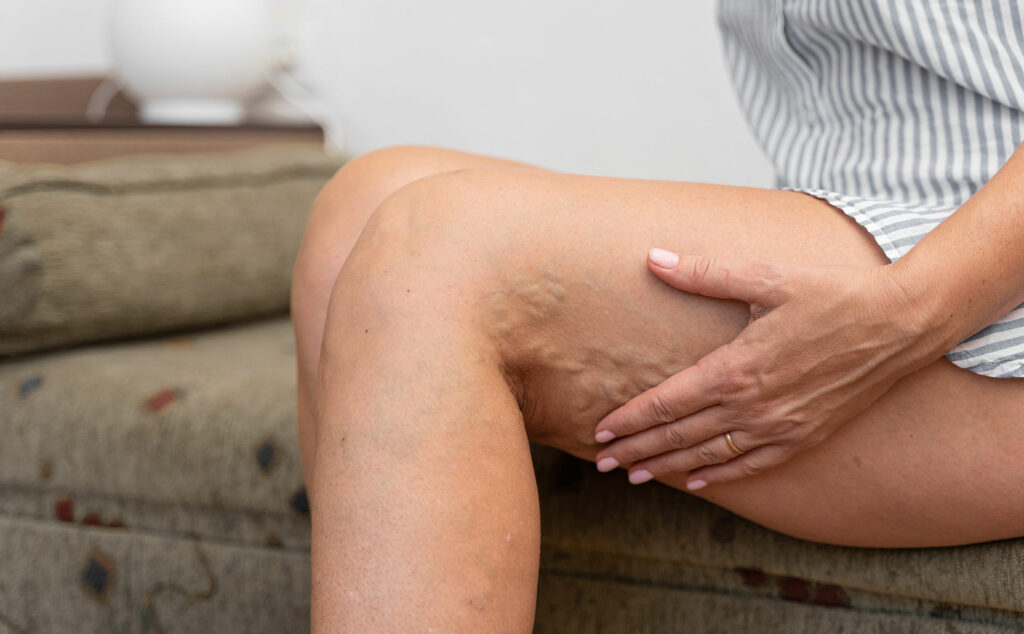What are varicose veins?
Varicose veins are abnormal dilations of the veins that occur mainly in the legs; this is because the pressure becomes more important with bipedalism (staying upright).
Varicose vein risk factors
Varicose veins represent a very common problem that can occur at all ages. It mainly occurs in people over 50 years old, in multiparous women, in smokers, in patients with obesity, and sedentary people. More than half of people over the age of 60 have some degree of leg vein disease, the most common being telangiectasias (spider legs) and varicose veins.
In the general population, varicose veins occur in 1 to 3 out of 10 people.
Varicose veins are the most common venous disease for which patients see a doctor. The unpleasant aesthetic part is the patients’ main complaint, although it is known that varicose veins are only one stage in a disease with a very broad spectrum of symptoms, ranging from small veins to ulcers that greatly affect quality of life.
Varicose veins – Symptoms and causes
Varicose veins usually appear on the medial or posterior side of the legs (calves). Many patients do not have or believe they do not have symptoms. Their intensity is not related to the size or number of varicose veins.
The symptoms can be heaviness, a sensation of heat, burning, itching, tiredness, and other less common symptoms. Unfortunately, most of these symptoms are not very specific, which indicates that they could be due to other problems such as musculoskeletal disorders, sciatica-type nerve compression, rheumatic or arterial problems, etc.
Varicose veins- Diagnosis and treatment
Varicose veins diagnosis is very simple, just a physical examination in the doctor’s office. What is important in varicose veins diagnosis is to determine what causes them, in which veins the problem is, and to rule out dangerous diseases that cause them. This can be deep vein thrombosis, vein compression syndromes, venous reflux due to chronic disease, etc. To establish the diagnosis and rule out these diseases, it is essential to have a venous Doppler ultrasound and, on some occasions, more complex tests such as CT angiography or magnetic resonance angiography. Sometimes it is necessary to perform an endovascular ultrasound and venography, during which treatment can also be established.
The main cause of varicose veins in the legs is chronic superficial venous insufficiency with significant venous reflux.
The treatment of varicose veins consists of excision or injection and the elimination of the main cause (reflux). This is achieved with two main methods: conventional surgery and endovascular methods (minimally invasive).

Preoperative

Postoperative

Postoperative
Sclerotherapy is one of the most used methods to eliminate varicose veins. It consists of injecting a substance into the vein to close it from the inside.
Conventional surgery or saphenectomy consists of the complete removal of the vein that suffers from reflux, through incisions in the groin and ankle. This method is used less frequently.
Minimally invasive surgery can be performed with laser or radiofrequency, through a single puncture to close the vein from the inside with heat. This is an outpatient surgery. The recovery is very fast, the patient walks from the first day and returns to their daily activities in 24 hours.
At ABC Medical Center’s Cardiovascular Center, we can provide you with specialized care. Contact us!
Fuente:
Dr. Claudio Alberto Ramírez Cerda – Vascular and Endovascular Surgery specialist at ABC Medical Center.



